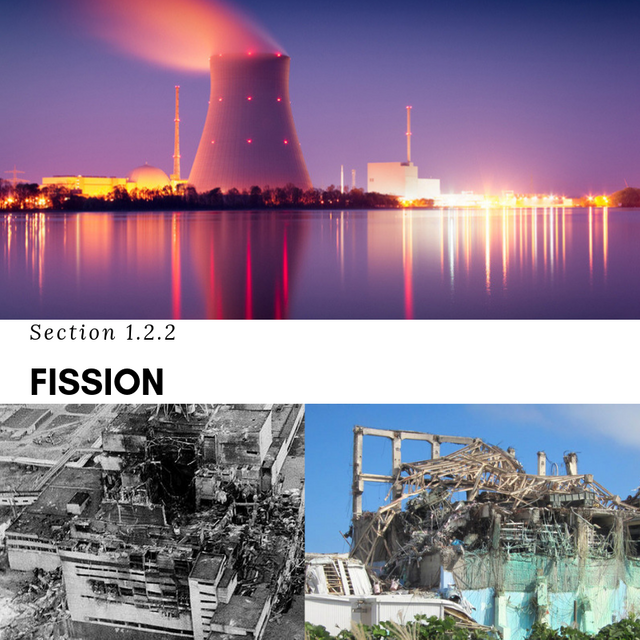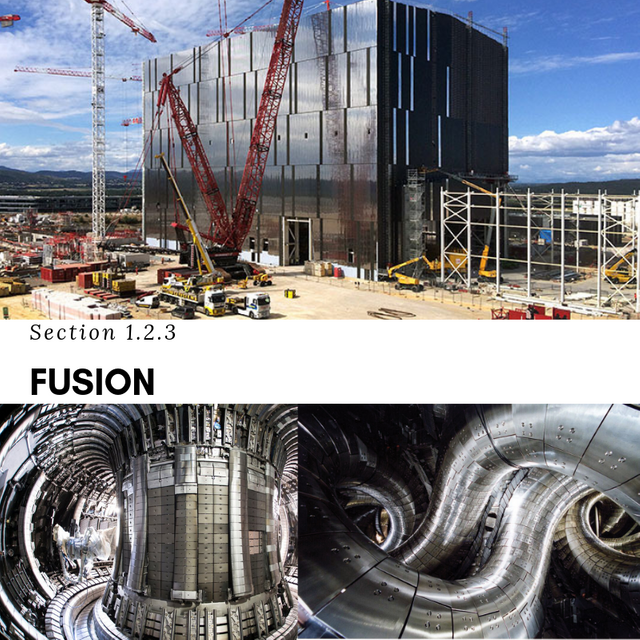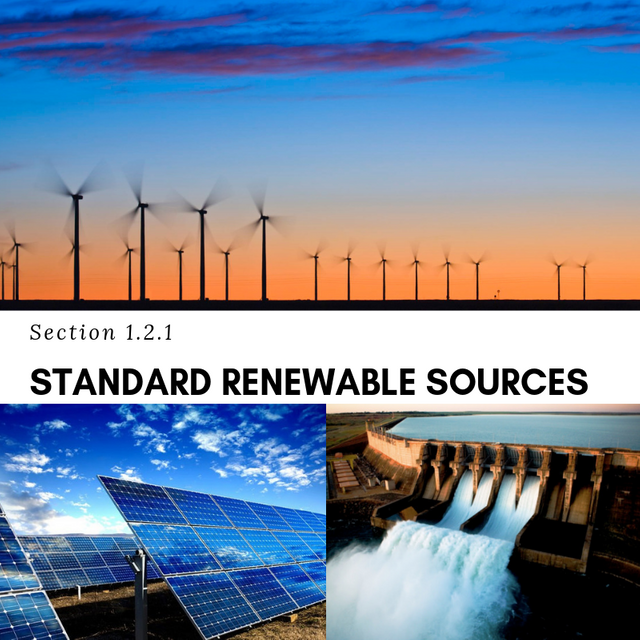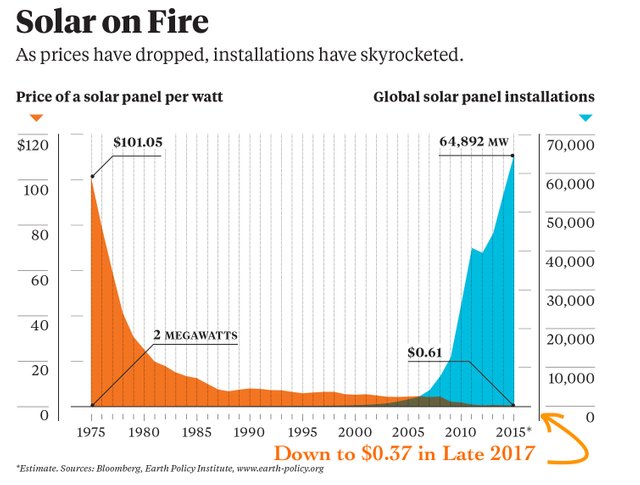
This will be the second entry in the Guide to Thermonuclear fusion. You can see the Table of Contents here where you can navigate to the subject you wish.
This part of the Guide will be focused on the advantages and disadvantages of fusion compared to other renewable or "clean" energies especially through the light of climate change, our biggest motivator for change.
Lets first look at the renewable energy types, highlighting their advantages and weaknesses.
I will not be talking about hydro energy, because of the lack of its viability in the long term. Hydro energy is especially hindered by the fact that hydro power plants are quite expensive to build while still having a massive impact on the local ecosystem. These facts make them extremely unlikely to be successful in the distant future.
The second energy type I want to talk about is wind energy. The much smaller scales on which it can be built make it much less invasive concerning the local ecosystem and they are less expensive per W of power generated. Lets compare its cost efficiency to that of hydro power. The largest dam producing energy in the world is the Three gorges dam in China, which produces about 22.5 GW of power. It cost about 22.5 billion dollars to build. This means its efficiency is about 1 W/$. For comparison, a standard wind turbine generating about 3-4 MW of power costs about 2 million dollars, making the efficiency about 0.5 $/W. It comes with an added benefit that it can be built on much smaller scales making it more versatile. Hydro-power dames are always very large. But wind turbines have a quite bad property. If there is no wind there is no power. Power output intermittency make it unlikely that they will be used as a reliable power source.
The third and last power source I want to talk about in this first section is solar power. In the figure to the left one can see that because of advancements in materials science the cost of solar panels per W had been steadily falling. It now comes just at bellow 0.4 $/W making it even cheaper than wind turbines. This trend of cheaper and cheaper solar panels has not slown down in recent years, making the technology possibly even cheaper in the future. In the blue line one can see that adoption of the technology has skyrocketed with the ever cheaper technology.
But solar power has its own issues. Again power intermittency is an issue. With no sun, there is no energy. Also energy storage is difficult for energy consumption during the night, with battery storage being still quite ineffective.
.png)
The next on the list of possible energy sources is energy gathered from the process of splitting massive nuclei - fission.
The energy source needs no introduction really. After the invention of the atomic bomb during the second world war civil research on the possibility of harnessing its power has boomed. The first generation 0 fission reactor was built only years after and additional reactors of various generations followed suite.
The advantages of fission are many. It emits no CO2 or other greenhouse gasses and is therefore considered clean when it comes to the climate change debate. Compared to other fossil fuel sources it requires a relatively small amount of fuel. The power output is of course very stable and reliable with breakdowns of reactors occurring extremely rarely.
But the downsides are also massive. The final output of the standard uranium reactor is plutonium which has an extremely long half life. This means that once it is produced it will stay on Earth for about 40 thousand years. Also it is extremely radioactive. Also mining of uranium ore is extremely expensive, its refinement even more difficult. This means only a handful of countries on Earth are able to mine and refine U which means they have a monopoly over it. Despite accidents occurring very rarely, when they do they are catastrophic. This was elucidated on the examples of Fukushima and Chernobyl. Also the cost is pretty expensive, with the latest generation being predicted to be from 2-5 $/W. Source
All pros and cons combined together make fission energy a viable alternative as an energy source while we try to shake our addiction to fossil fuels and while we try to develop other sources of energy and while we make existing ones cheaper and cleaner. But in the long term fission energy as it is now is not viable.
.png)
Well we have to get one thing out of the way first. The cost of fusion power is not known as of yet, as no reactors are running currently. If we take the construction of ITER into account we can compute a nice upper bound for the cost. The construction will cost around 20 billion dollars while the power output will be around 500 MW. This means that the cost is around 40 $/W. As one can see it is very expensive currently. But with future innovation and taking into account that all that is needed for power generation is a little bit of water and lithium the cost will be much lower in the future. Another downside is that neutrons produced in the fusion reaction will impact the wall and cause transmutations of the wall material. This can cause radioactivity on a small scale. It is also possible that lithium could become the next gold because of its uses in the energy sector like in Fusion and batteries.
There are no real other downsides to nuclear fusion. The heat used for wall cooling will be circulated in a closed circuit and used in turbines for electricity generation. The amount of fuel needed is very low. Only about half a kilogram of sea water and about 2 kg of lithium will suffice to power a average family through the year. Compared to coal, several tons of coal is needed. In the first generations of reactors D and T will be used. In the D + T reaction only He and neutrons are generated. Neutrons will deposit all of their energy in the wall so they will be harmless. He is already in the air so we know it is also completely benign to humans and to the environment. It is also important that even in the most catastrophic scenario of a reactor malfunction, the instability of the fusion reaction will just cause it to stop. No severe accidents that could impact the environment can possibly occur.
So how do I predict the future energy production will look like. I personally think that most of the energy will be produced by renewable energies like wind and solar because of their versatility, ease of construction and cost effectiveness. But to combat their intermittency we can expect that several fusion reactors will be used instead of the current fission reactors, which will be slowly decommissioned.
StemQ Notice: This post was originally submitted on StemQ.io, a Q&A application for STEM subjects powered by the Steem blockchain.




Interesting post.
But the most important thing to remember, @samve and I had a discussion about this awhile back, is that until we have a "safe" and stable place for all of the isotopes left over post nuclear reactions for them to live out a happy half-life, that we should consider alternatives to nuclear power.
Right now, no such place exists making nuclear power actually one of the the least clean forms of energy. Thus 40,000 years from now, will we even be here to curate the waste?
Or will the plants and animals of the land and sea inherit the leftovers from our nuclear experiments?
Cool article.
Downvoting a post can decrease pending rewards and make it less visible. Common reasons:
Submit
That was indeed an interesting discussion! Here is a very interesting video about "SKB" I found recently. A company that handles Swedens nuclear waste. They have a great pilot project about permanent storage of this type of waste. Might be interesting to visualize the possible future of nuclear energy.
Downvoting a post can decrease pending rewards and make it less visible. Common reasons:
Submit
Awesome... glad my "call out" worked! I'll check the vid out. Thanks for sharing this knowledge!
Downvoting a post can decrease pending rewards and make it less visible. Common reasons:
Submit
I liked the comment about the fracture zones being "extremely old". Nothing to worry about then.
Those are only "old" fractures. Sounds stable! A decent sounding plan, nevertheless and slick production. 3 barriers sound good too.
Downvoting a post can decrease pending rewards and make it less visible. Common reasons:
Submit
That is the main drawback of nuclear fission yes. But because we are currently battling climate change which appears on a much smaller time scale then the nuclear waste problem, nuclear fission is considered a "clean power source" in terms of greenhouse gasses. In comparison the tritium used in nuclear fusion has a half-life of only 12 years, which is basically nothing.
Downvoting a post can decrease pending rewards and make it less visible. Common reasons:
Submit
Good discussion. I just watched the video from Sweden above and seems like an ok solution with a challenging problem.
Agreed the climate change and nuclear waste are both problems. One is global, the other is local. Well clearly as long is there are no major accidents that would put radiation into the atmosphere.
12 years is a long time if systems do not work 100% of the time. The checks and balances in place one day, may not exist the next. But agreed this is a shorter time scale. Interesting conversation!
Downvoting a post can decrease pending rewards and make it less visible. Common reasons:
Submit
Well compared to plutonium with 40k years I think 12 years is much better, but I see your point.
Downvoting a post can decrease pending rewards and make it less visible. Common reasons:
Submit
There is no free lunch. This is the general rule and it is so hard to explain it to most people.
I am happy to read this. People are claiming wind and hydro are the cleanest sources of energy. Which is not true at all when one accounts for the whole process, from the building to the dismantling of the plant.
PS: one efficiency unit is inverted (in the wind paragraph).
Downvoting a post can decrease pending rewards and make it less visible. Common reasons:
Submit
Agreed.
Externalities need to be taken into account as well.
What and where were the raw materials that were mined to build the towers and wire them up and connect them with the grid? @vath had an interesting article recently about the effects of wind towers on birds, so the impacts on the ecosystem need to be considered as well....
Downvoting a post can decrease pending rewards and make it less visible. Common reasons:
Submit
I think you made a typo in the Steemian name. There is no @vath. :)
Everything has an impact and we need to assess what price we are ready to pay, as the human race. Which may be complicated to implement due to our nature.
Downvoting a post can decrease pending rewards and make it less visible. Common reasons:
Submit
Hey!
I meant @valth... sorry!
Agreed with thinking about the overall price, of everything as well. Externalities count.
Downvoting a post can decrease pending rewards and make it less visible. Common reasons:
Submit
Well if you isolate only the energy gathering part of lets say the wind turbine, then yes, it might be the cleanest. Wind is pretty clean anyway IMHO. But hydro definetly impact the local ecosystem (river) in a major way for sure. You are daming the river up!
Downvoting a post can decrease pending rewards and make it less visible. Common reasons:
Submit
But this is misleading to only focus on the energy production process, IMO.
Downvoting a post can decrease pending rewards and make it less visible. Common reasons:
Submit
This post has been voted on by the SteemSTEM curation team and voting trail in collaboration with @utopian-io and @curie.
If you appreciate the work we are doing then consider voting all three projects for witness by selecting stem.witness, utopian-io and curie!
For additional information please join us on the SteemSTEM discord and to get to know the rest of the community!
Downvoting a post can decrease pending rewards and make it less visible. Common reasons:
Submit
Hi, @maticpecovnik!
You just got a 0.16% upvote from SteemPlus!
To get higher upvotes, earn more SteemPlus Points (SPP). On your Steemit wallet, check your SPP balance and click on "How to earn SPP?" to find out all the ways to earn.
If you're not using SteemPlus yet, please check our last posts in here to see the many ways in which SteemPlus can improve your Steem experience on Steemit and Busy.
Downvoting a post can decrease pending rewards and make it less visible. Common reasons:
Submit
Congratulations @maticpecovnik! You have completed the following achievement on the Steem blockchain and have been rewarded with new badge(s) :
Click here to view your Board of Honor
If you no longer want to receive notifications, reply to this comment with the word
STOPDo not miss the last post from @steemitboard:
Downvoting a post can decrease pending rewards and make it less visible. Common reasons:
Submit
Hi @maticpecovnik!
Your post was upvoted by Utopian.io in cooperation with @steemstem - supporting knowledge, innovation and technological advancement on the Steem Blockchain.
Contribute to Open Source with utopian.io
Learn how to contribute on our website and join the new open source economy.
Want to chat? Join the Utopian Community on Discord https://discord.gg/h52nFrV
Downvoting a post can decrease pending rewards and make it less visible. Common reasons:
Submit
Congratulations @maticpecovnik! You have completed the following achievement on the Steem blockchain and have been rewarded with new badge(s) :
Click here to view your Board of Honor
If you no longer want to receive notifications, reply to this comment with the word
STOPDo not miss the last post from @steemitboard:
Downvoting a post can decrease pending rewards and make it less visible. Common reasons:
Submit
I really enjoyed learning about the various advantages and disadvantages of the different energy sources available.
Nice job
Downvoting a post can decrease pending rewards and make it less visible. Common reasons:
Submit
Thank you very much. :)
Downvoting a post can decrease pending rewards and make it less visible. Common reasons:
Submit